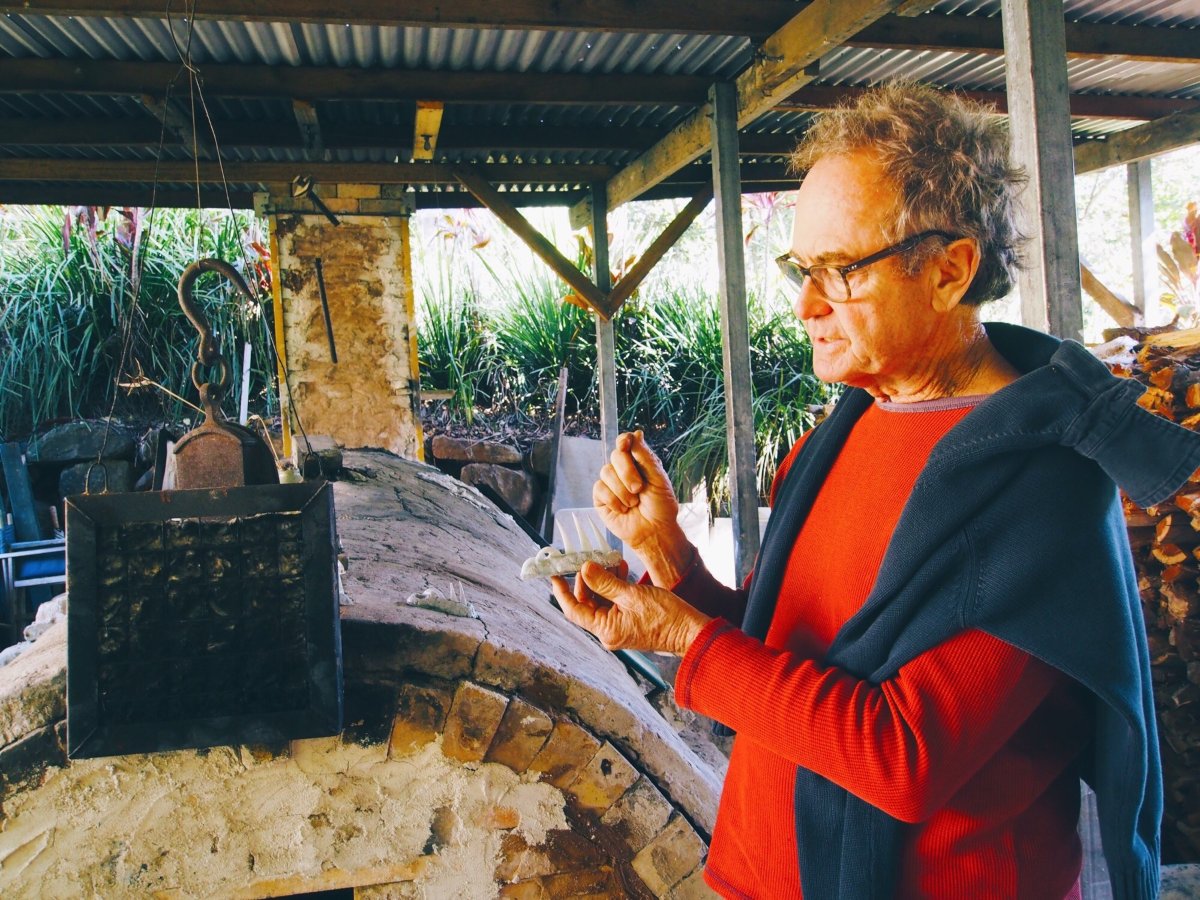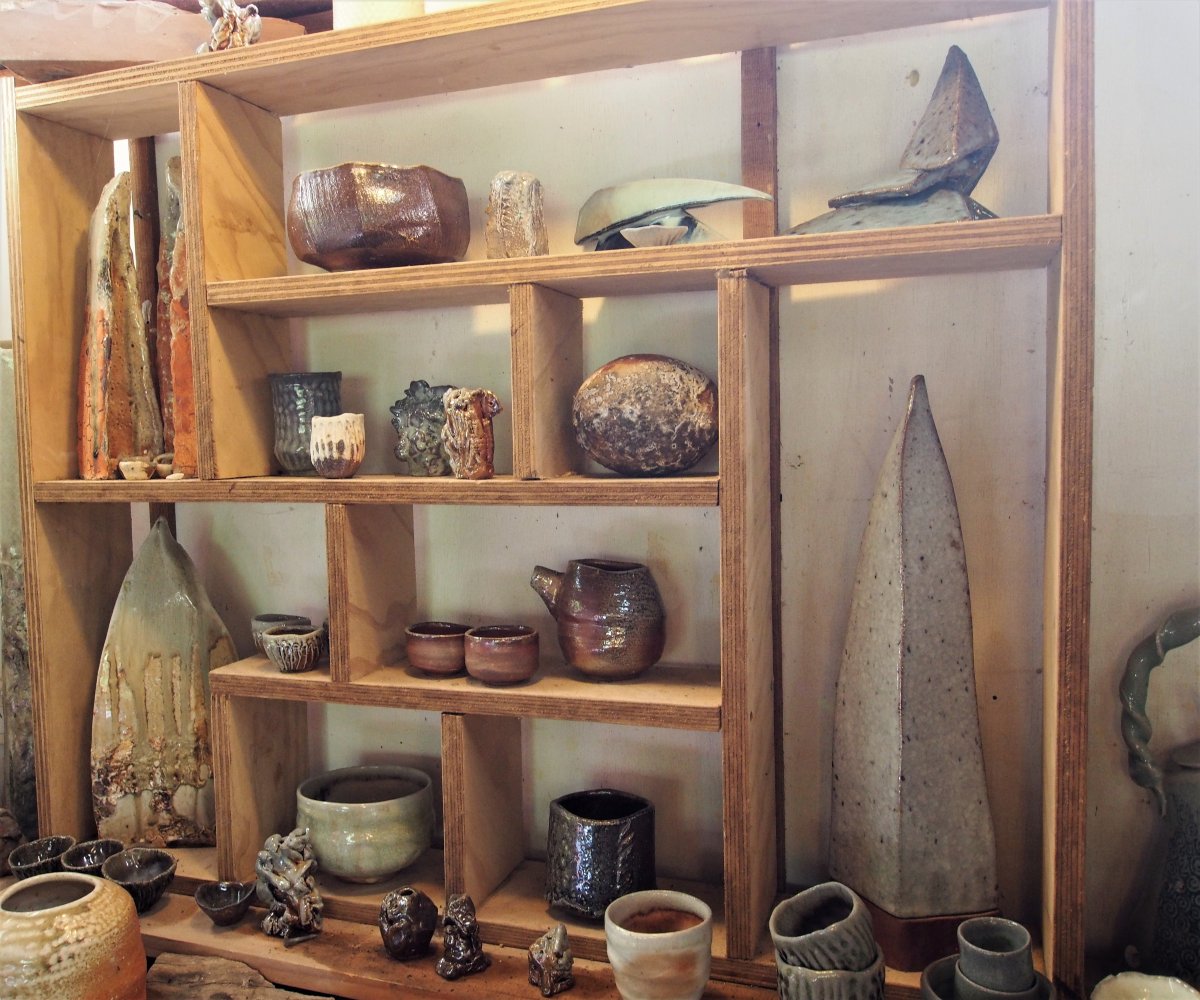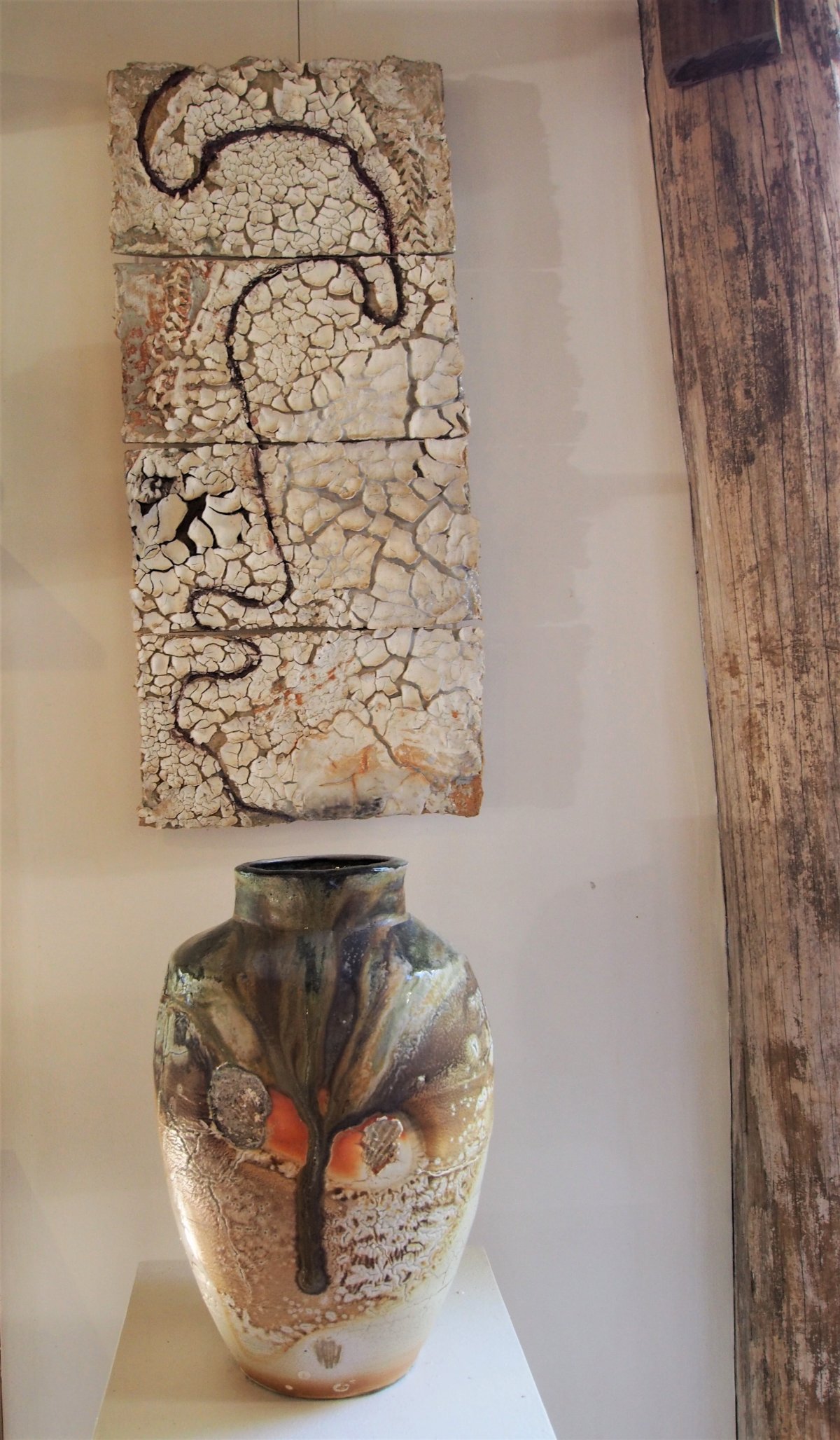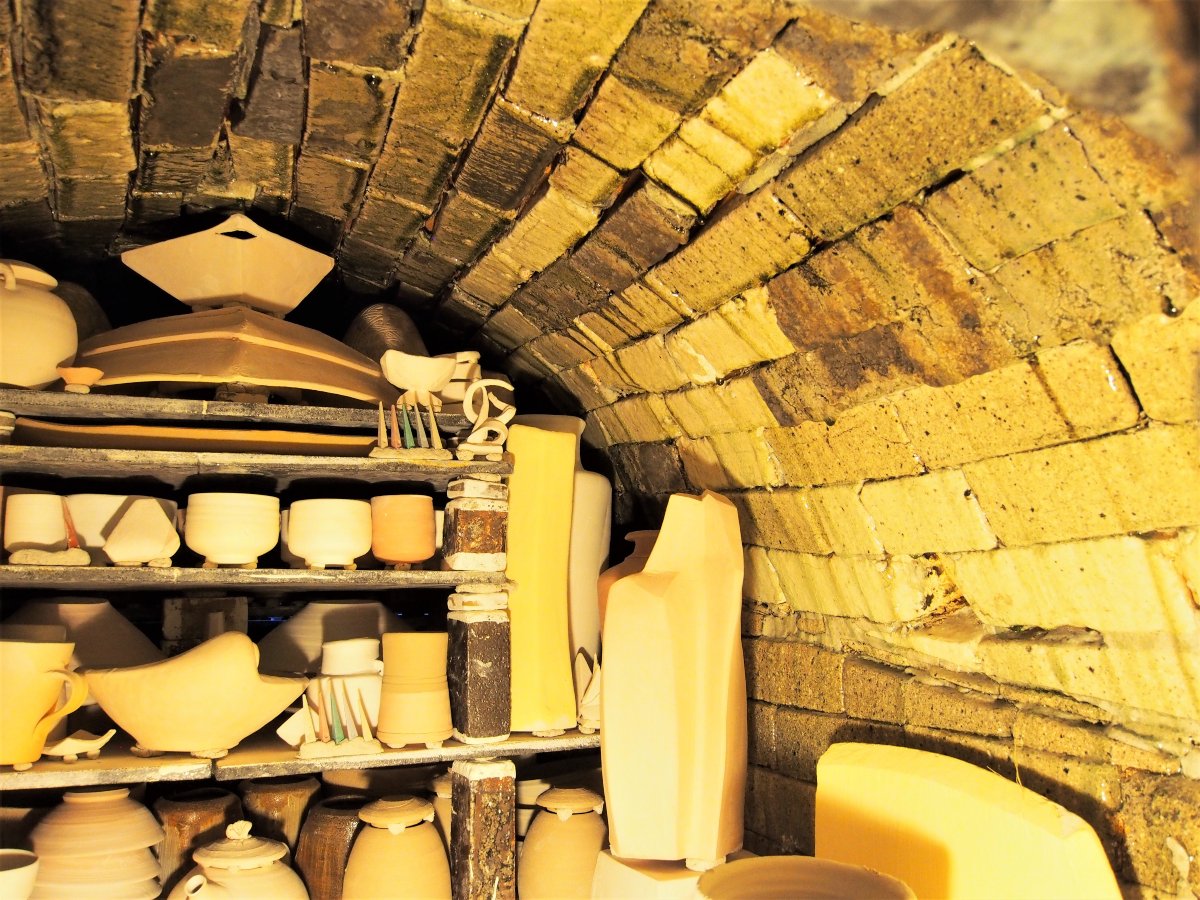
Suvira explains heat work during the firing process
We visited well-known ceramicist and sculptor Suvira McDonald who was gearing up for this weekend’s North Coast Mud Trail
Suvira’s studio in Goonengerry is set on a steep hill surrounded by rainforest. You wind down stairs to the circular, wooden studio which has big windows looking onto the sunny garden.
Suvira expects more than 400 art lovers through his doors during this weekend’s North Coast Mud Trail.

One of the many beautiful nooks in Suvira's studio
As one of the founding members of the Mud Trail in 2012, he’s thrilled the annual event has brought so much to the region.
“When the Australian Ceramics Association said they wanted to do an open studio day across Australia, there were nine of us local potters who took part. We decided to promote ourselves collectively and it was an instant hit.
This year, more than 20 ceramic artists and sculptors are opening their studio doors for the Mud Trail which has you winding through the stunning scenery of the Byron hinterland.
“The increasing popularity of the Mud Trail really mirrors the huge surge in demand for the handmade.
“A few years ago, restaurants got sick of anonymous white plates. Now there is a strong dialogue between the potter and the chef in terms of how they want to present their food. It’s a similar story in the home, people are now much more likely now to have a handmade teapot or serving platter.
Suvira’s ceramics practice has a focus on domestic dinnerware as well as landscape interpretations and sculpture formed in low relief and free standing modalities.

The rough textures and earthy colours of Suvira's work
“Sculpture in low relief implies it’s a wall mounted concept, when it’s quite flattened whereas high relief is where there are protruding forms from the wall. However, as a sculpture it’s not like a painting, it has texture and undulation and the images protrude from the surface.
These pieces are reminiscent of an aerial view of the Australian landscape with its rugged shapes and earthy colours. Suvira begins work on a flat surface and then builds up the image before firing it in the kiln.
It is apparent Suvira enjoys the technical aspects of ceramics and the intricacies of construction, having been a teacher of ceramics and sculpture for 20 years at Southern Cross University. More recently, he has finished a long project involving the construction of a traditional anagama, Japanese-style wood fire kiln.
“Anagama in Japanese means excavated kiln. Traditionally the side of a hill was excavated and the kiln was built inside the hill and the earth was covered back over. When kilns heat up they expand and then when they cool they settle so unless the whole thing is compressed and held it will expand to a point of collapse.
“We’ve taken that kiln design and appropriated it in the West and have found other ways to contain the expansion with buttressing or metal frames," Suvira said.
Suvira starts placing the pieces for firing at the back of the anagama and keeps placing items in until full. He will then light the wood fire and seal it up. To gauge the progress, Suvira uses little pyrometric cones which measure ‘heat work’ - melting at a specific point and providing a more valuable indicator than a simple temperature reading.

Inside the Anagama - the brick walls on the inside are glazed from when the ash from the wood fire rises and melts on the wall
Some of the results from this kiln were exhibited at ‘Smoke on the Water’ National Woodfire Conference 2017. His exhibition Vestigial Vessels was a solo showing of wood fired works at Makers Gallery Brisbane in 2018. Suvira also recently showcased his work at ‘Silhouette, the Body of Nature’ at Rochfort Gallery, North Sydney
Visit Studio Suvira this weekend at 3/300 Mafeking Rd, Goonengerry.
Mud Trail map.
Got a story for the Hinterland Post? Let us know.